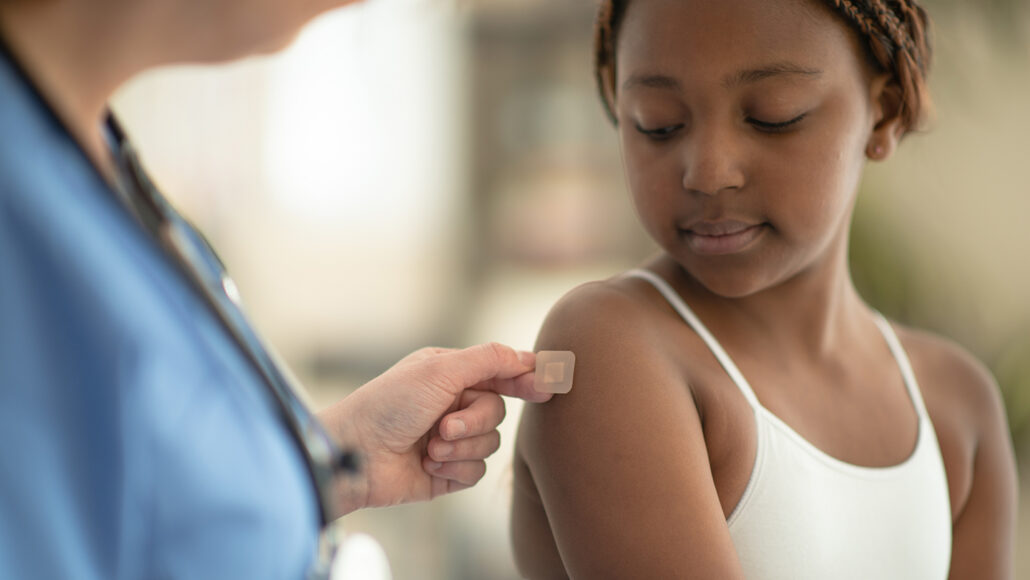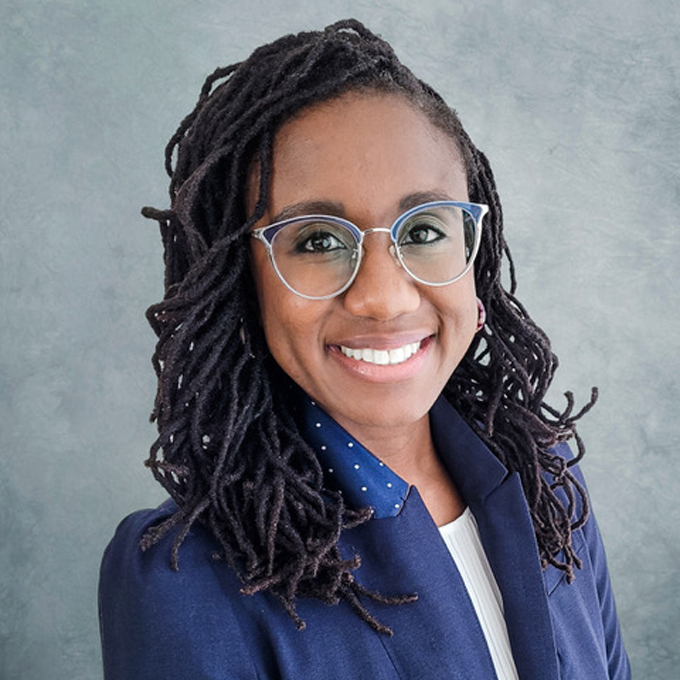Brown bandages would help make medicine more inclusive
Matching darker skin tones redefines what’s viewed as normal, a medical student explains

Most bandages on the market are tinted to most closely match white people’s skin tone. Making brown bandages more common could help counter racism in medicine, medical experts argue.
FatCamera/E+/Getty Images
By Sujata Gupta
When she was a child, Linda Oyesiku skinned her knee on her school’s playground. The school nurse cleaned her up and covered the wound with a peach-tinted bandage. On Oyesiku’s dark skin, the bandage stuck out. So she colored it with a brown marker to help it blend in. Oyesiku is now a medical student in Florida at the University of Miami Miller School of Medicine. She recently needed to conceal a wound on her face after surgery. She didn’t expect the surgeon’s office would have any brown bandages, though. Instead, she brought her own box. Those episodes left her wondering: Why were such bandages not more widely available?
Peach-tinted bandages were invented in the 1920s by pharmaceutical company Johnson & Johnson. Peach has been a default color ever since. It matches light skin well. But, as Oyesiku noted, those bandages stand out on darker skin. They send a message that light skin is more “normal” than dark. And it’s a stark reminder that medicine remains centered on white patients. Oyesiku is now calling for brown bandages to become mainstream. They would be a visible reminder that many skin tones are “natural and normal,” she says. Her commentary on it appeared October 17, 2020 in Pediatric Dermatology.

Educators and Parents, Sign Up for The Cheat Sheet
Weekly updates to help you use Science News Explores in the learning environment
Thank you for signing up!
There was a problem signing you up.
Bandages are a universal symbol of healing. And they treat more than just cuts and scrapes. Adhesive patches are used to deliver some types of medicines, such as birth control and nicotine treatments. Those patches, too, are mostly tinted peach, Oyesiku reports. Since the 1970s, smaller companies have introduced bandages for multiple skin tones. But they’re harder to come by than peach-tinted ones.

The issue goes deeper than a bandage, Oyesiku says. Whiteness has long been treated as the default in medicine. That has contributed to Black and other minority groups’ distrust of medical professionals. It also has led to biases in the computer algorithms that U.S. hospitals use to prioritize patient care. These biases can lead to worse health outcomes for patients of color.
Dermatology is the branch of medicine focused on the skin. That makes it a good starting point for fighting racism in medicine, says Jules Lipoff. He’s a dermatologist at the University of Pennsylvania in Philadelphia. “Dermatology is racist only inasmuch as all of medicine and all of society is. But because we are at the surface, that racism is easier to recognize.”
Consider “COVID toes.” This condition is a symptom of COVID-19 infection. Toes — and sometimes fingers — swell and discolor. A group of researchers looked at images in medical articles about skin conditions in COVID-19 patients. They found 130 images. Almost all of them showed people with white skin. But skin conditions can look different on other skin tones. And in the United States and the United Kingdom, Black people are more likely than whites to be affected by COVID-19. Photos of Black patients are crucial to proper diagnosis and care, the researchers say. They reported their findings in the September 2020 British Journal of Dermatology.
Unfortunately, medical images for dark skin are scarce, Lipoff says. He and his colleagues looked at common medical textbooks. Only 4.5 percent of their images depict dark skin, they found. They reported this in the January 1 Journal of the American Academy of Dermatology.
For bandages at least, change might be coming. Last June, in response to civil-rights protests, Johnson & Johnson pledged to roll out bandages for multiple skin tones. Will health-care providers and stores stock them? That remains to be seen.
Brown bandages won’t solve racism in medicine, Oyesiku says. But their presence would symbolize that everyone’s flesh color matters. “Inclusivity in dermatology and medicine [is] so much deeper than a Band-Aid,” she says. “But small things like this are a gateway to … other changes.”







